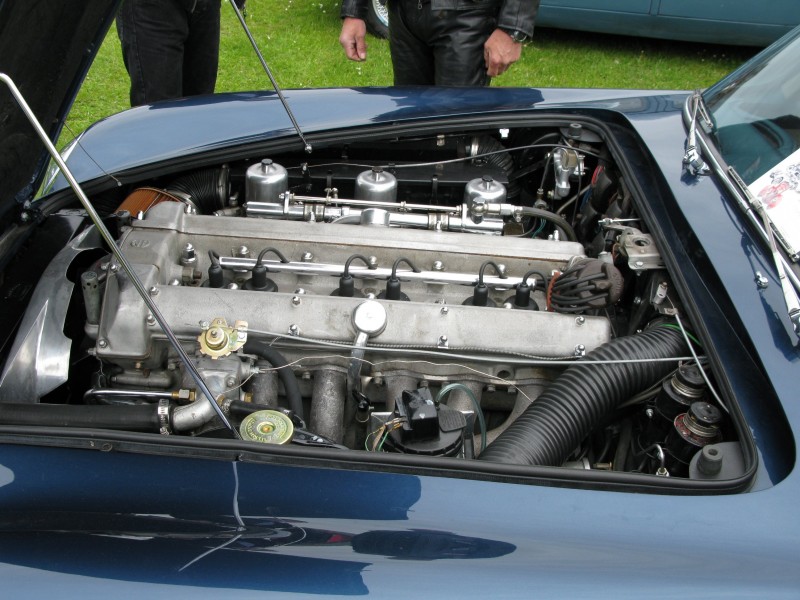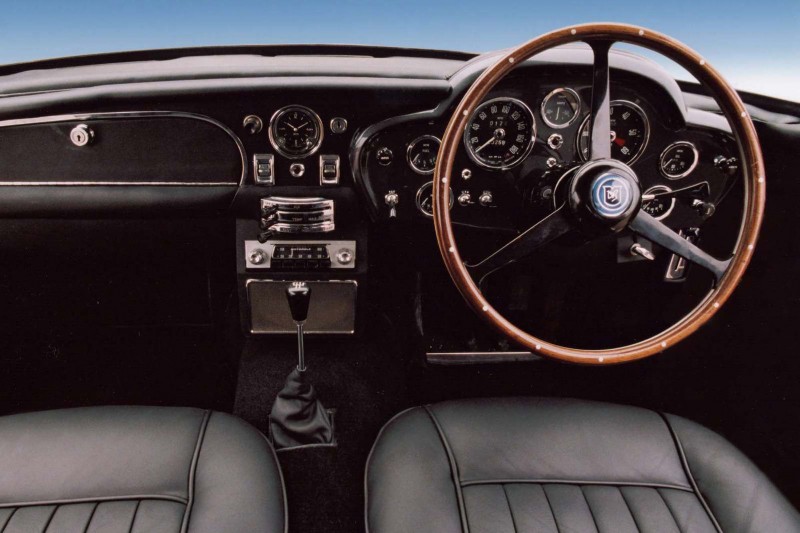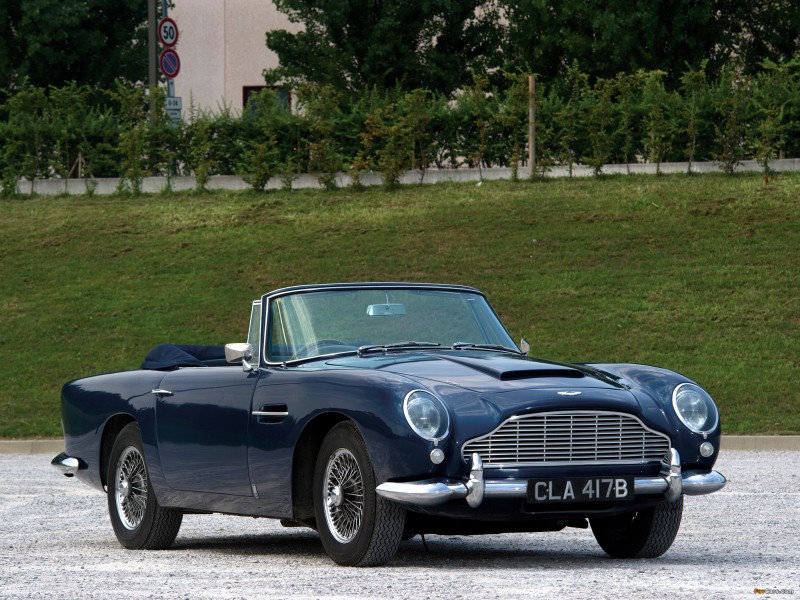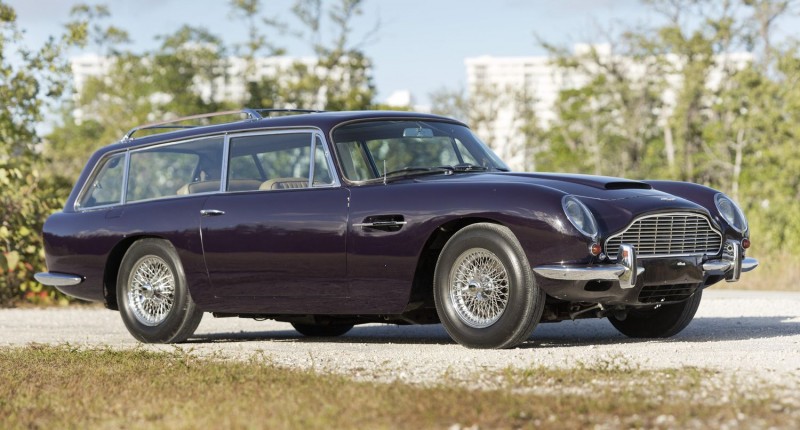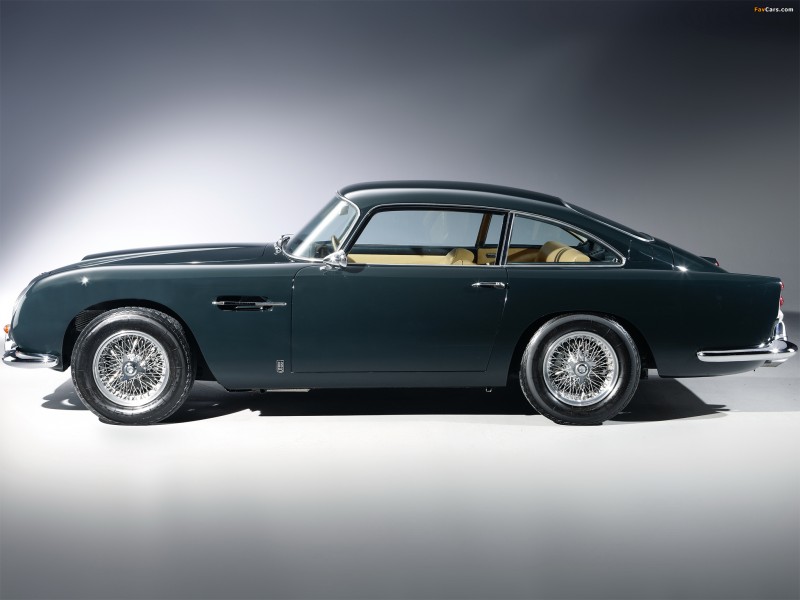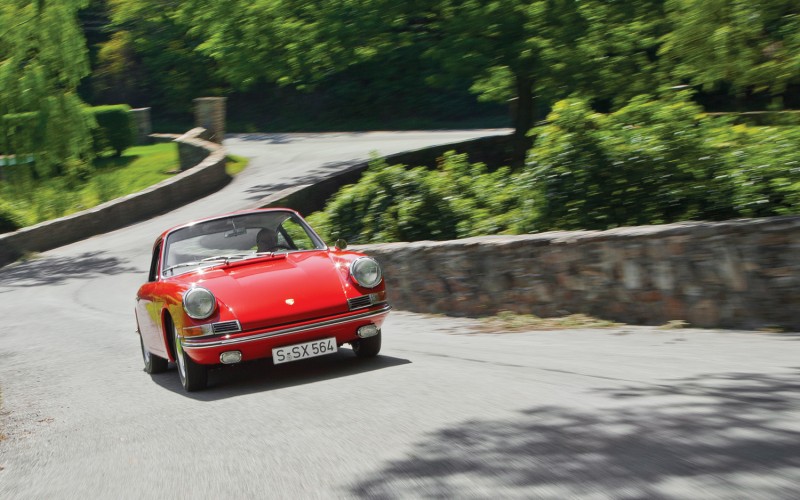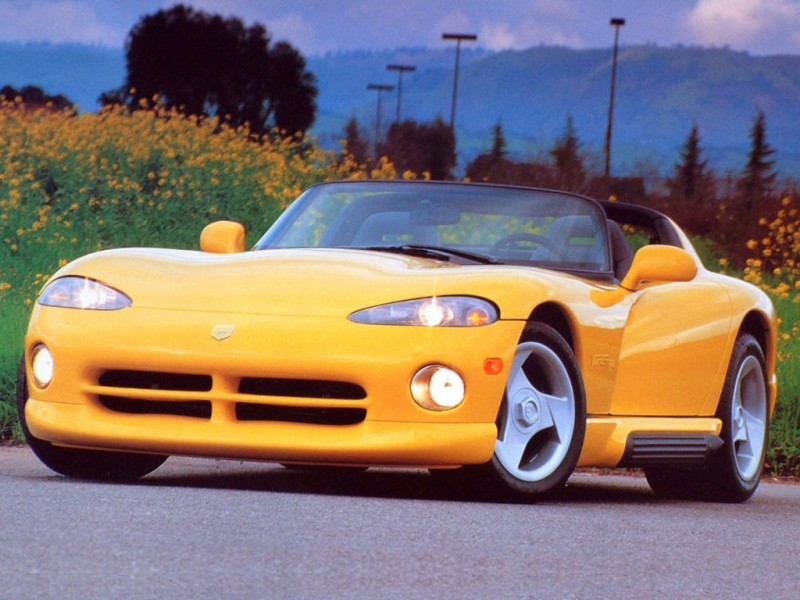In 1963, Aston Martin set about revising the DB4 into its final evolution and, unbeknownst to Aston Martin, into what would become a film star legend. Calling upon iconic Italian designers Carrozzeria Touring Superleggera they received a newly revised body that would go on to define Aston Martin’s cars for decades.
A Foundation of Performance Parts
With the intent of being the successor to the DB4’s chassis, Aston Martin went all out on the DB5. Most notably by incorporating the most powerful engine available on the DB4 as the standard powerplant for the DB5.
The all-aluminum straight-six engine was from the performance level Vantage of the previous car and produced a mind-melting 282 hp. With triple carburetors, dual-overhead camshafts, and a four-liter displacement the DB5 was good for speeds exceeding 140 mph, quite lofty for a road car in the early sixties.
Underneath that sculpted body were a fully independent front suspension, a live rear axle in the back, standard disc brakes, and a five-speed transmission. When Aston Martin debuted the DB5, it initially carried over a four-speed box, but that was dropped shortly after to put in the fifth (overdrive) gear. A three-speed automatic, designed by Borg Warner, was also available if you checked the right option box.
England Meets Italian Design: Again
Not content with using only one Italian design firm, Aston Martin, tapped Touring Design to take their 2+2 coupe and give it more upward breathing room. Produced for the same years as the coupe, the convertible made up only 10% of the total production, with only 123 units being made. Additionally, there were 13, with one prototype, shooting brake models designed. Being practical and looking suave has rarely been so accessible to the public.
Vantage Point
Anyone with a thirst for speed though, and apparently only 65 people did, went for the higher-performance Vantage variant of the DB5. Introduced partway into 1964 the Vantage took the already powerful DB5 motor and messed with the formula a bit more. Three Weber side-draft carburetors were stuck on, the camshafts were revised to be hotter, and this all gave the Vantage 315 hp. This motor gave a lot more power but sacrificed everyday performance.
Movie Magic
Aside from the stunning looks, the DB5 is really famous for being 007’s getaway car of choice. Popularized in the movie Goldfinger, the DB5 has achieved stardom like few other cars. The alluring styling that was coupled with the svelte James Bond has encapsulated Aston Martin’s image as a high-class sophistication with an unbridled performance car option. For the films, two of these movie cars were made, with one of them being sold into a private collection.
Like a bright star in the universe, though, the DB5 burned fast, brilliant and after only two years burnt out as production was discontinued. The DB6 would be built upon the chassis of the DB5 and ultimately improve on the legacy of the DB4 and DB5 (apparently they weren’t done with that chassis).
The DB6 project went so well that it would be the longest production run Aston Martin had ever seen at that point. However, nothing would be quite as sultry as the swift spy car that would bring Aston Martin their lasting fame.
Specifications
- Years: 1963 – 1965
- Motor & Layout – I-6 (Front Mounted)
- Seating – 2 + 2
- Displacement – 4.0 L
- Drive – RWD
- Power (hp) – 282 hp / 315 hp (Vantage)
- Torque (lbs-ft) – 280 ft-lbs
- Transmission – 4-speed / 5-speed / 3-speed automatic
- Wheelbase – 2489 mm / 98.0 in
- Weight – 1466 kg / 3233 lbs
- 0-60 mph – 7.5 seconds
- Quarter-mile – 16.2 seconds
- Top Speed – 228 kph / 142 mph


